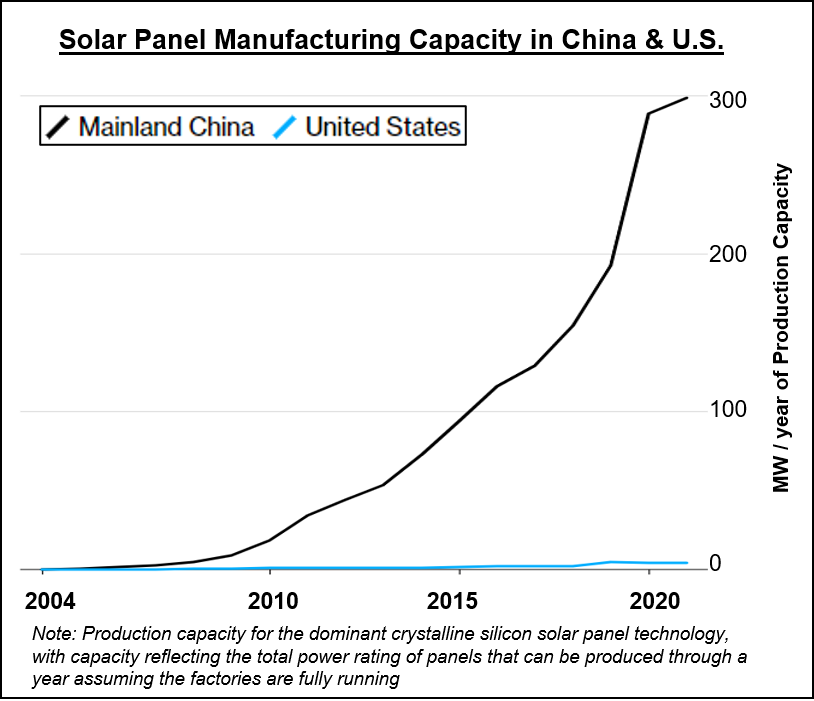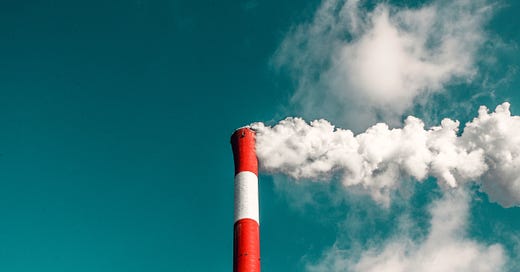Welcome to the 10 new subscribers who’ve joined us. If you haven’t yet subscribed, the link below will help solve that problem. 👇
This week’s edition has four sections: 1 infographic, 1 chart, 1 quote, and 1 meme
Read time: ~7-8 minutes
1. Systematic CO2 Generation
What can I do, as an individual, to reduce my carbon footprint?
That question is one I’ve pondered long and hard as of late. Eating less meat is an easy place to start. Biking and taking public transport instead of driving is also low-hanging fruit.
But, those small changes? They don’t move the needle.
The reality is that most of the carbon emissions I generate are the result of the systems in which I live. Nearly everything I do creates carbon emissions, from shopping on Amazon to flying home for Christmas to driving my car to work.
It may come as a surprise that the single biggest determinant of someone’s carbon footprint is personal income. Here are some stats from 2015 to reinforce that fact.
The Top 1% of income earners made up 15% of global CO2 emissions
The Top 10% of income earners made up 48% of global CO2 emissions
By living in a developed economy, I am part of a system that generates more carbon emissions than less developed economies.

Your takeaway should not be that small steps to reduce your carbon footprint are a waste of time. At the margin, those small steps still make a difference.
Instead, I hope this provides a more realistic picture of the carbon emissions we all generate.
To drive home this point, I’d ask you - how many pairs of shoes do you own?
I would hypothesize that there is a linear correlation between the shoes we own and the carbon emissions we generate. I own ten pairs of shoes. That’s a lot more than the singular pair that many people in the world have.
And so, it’s safe to assume that I generate a lot more carbon emissions than people who have one pair of shoes.
2. China Corners the Sun
Over the last ten years, China has cornered the global solar panel market.
To drive home this point, let’s look at the manufacturing capacity of China’s solar panel industry relative to that of the US. For reference, 1 MW of solar panels powers ~164 homes.

China now has an insurmountable lead over the US. So what happened?
Well, it’s simple really. Chinese companies were able to sell solar panels for less than North American and European competitors. And so China’s influence in the global solar panel market has grown considerably.
Some of the accusations levied against China, and its solar panel manufacturers, have been startling.
Burning Coal: Assailants of China’s solar superiority have accused the country of using dirty coal to generate cheap electricity. which is then used to produce solar panels. This could, in theory, provide Chinese firms with a cost advantage over competitors. It’s true, at least, that China uses a lot of coal in its energy mix. And yes, there’s a lot of energy required to manufacture solar panels.
Forced Labor: Human rights abuses have also been attributed to China’s solar advantage. A recent report by Goldman Sachs emphasized that cheaper labour was a key factor behind China’s success in lowering solar panel costs. The Chinese government has also acknowledged using so-called “surplus labour” programs, whereby millions of people are relocated from their homes to work.
Anti-competitive Behavior: China’s government has supported domestic solar panel manufacturers with financial subsidies. As a result, some have been able to operate at a loss for years. In turn, a handful of countries, including Canada and India, have accused China’s solar panel manufacturers of “dumping” products. Dumping is the process of selling something for less than the cost of making it.
Ultimately, China’s solar strategy has lowered the price of solar panels for everyone.
But at what cost?
3. A New Security Dimension
In May 2021, the US-based Colonial Pipeline became the latest victim of cybercrime.
This pipeline serves as the primary interconnection between crude oil refineries in Southern US states and demand hubs in the Northeast, including New York, Baltimore, Charlotte and Nashville.
For multi-billion-dollar Colonial, the $4.4mm ransom demand was just a speeding ticket. The negative publicity that accompanied the pipeline’s six-day shutdown was also definitely a pain in the company’s ass. But the ransomware attacks’ all-in damage to the company was limited.
For US consumers, the price of gasoline jumped in response. That’s assuming your local gas station still had any gasoline.
One week after the attack, 81% of gas stations in Washington, DC, still had no fuel.

As the technology underlying our global energy infrastructure moved online, a new type of vulnerability emerged. Putting up fences and barbed wire around energy assets is no longer sufficient. Cybersecurity is now equally important.
It’s worth contemplating a worst-case scenario to properly understand the threat posed to foreign energy grids by cyber attacks.
Someone in Russia, sitting in their underwear in a dark room, could theoretically shut down a nuclear reactor anywhere in the world. The consequences of a multi-day nuke shutdown would be much more severe.
My point is that government and corporations will increasingly need to work together. Otherwise, cybersecurity will quickly become a national security challenge.
4. Indiana Jones Buys Carbon Offsets
Climate-change-related promises made by big corporations have surged recently.
Many of those promises include a pledge to achieve “carbon neutrality” sometime down the road. A few examples:
Fedex (2040)
Amazon (2040)
General Motors (2040)
Ford (2050)
BP (2050)
Buying carbon offsets is one of the tactics companies use to reduce their net carbon emissions. But in the absence of making real operational changes, this seems more like greenwashing.
These companies are technically moving in the direction of carbon neutrality. But, like Indiana Jones with his Golden Skull, they’re missing the point.



